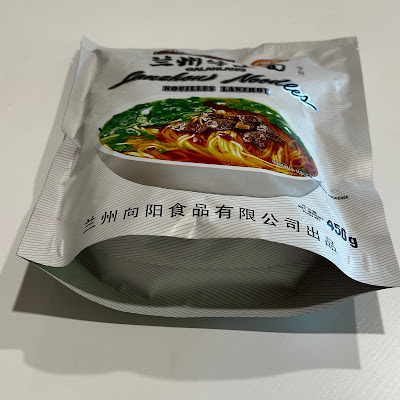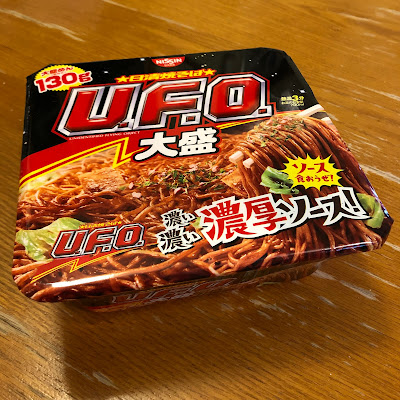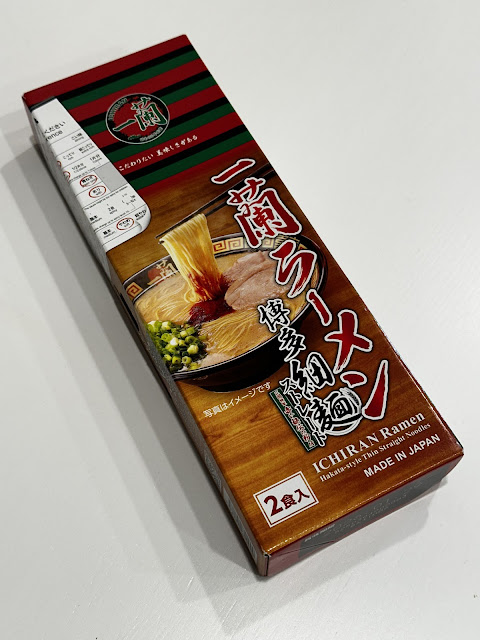Lanzhou beef noodle soup, or Lanzhou lamian, is known for its six key components: a flavorful broth, tender beef slices, daikon radish, hand-pulled noodles, chili oil, and fresh herbs. These noodles originated in Lanzhou, the capital of Gansu province in China, and are associated with the city's Hui Muslim community. The dish's history is linked to the ancient Silk Road, which passed through Lanzhou, and the dietary practices of the Hui people. While some stories trace the noodles back to the Tang Dynasty, the modern form is believed to have been popularized in the early 20th century by a Hui Muslim named Ma Baozi.
This is a ready to cook pack that doesn't have the tender beef slices or the hand-pulled noodles, but it has a beef broth and dried noodles. The noodles themselves are traditionally made with wheat flour, water, and sometimes an alkaline agent for texture. The broth is typically made with beef bones and aromatics like ginger, garlic, and spices such as Sichuan peppercorns, star anise, and fennel seeds. This noodle is anything but instant, but it is a relatively easy noodle dish to prepare as they provide all of the ingredients and directions. If you had some leftover roast beef, you could throw it in. I saw this at T&T market and thought I would try it as part of a number of Chinese instant noodles I wanted to try.
 |
| The front of the package. |
The packaging for this noodle is made of a white plasticized foil (shiny on the inside). A very appealing bowl of noodles is the front centerpiece of the package. There are some small pieces of beef on top of the noodles in a nice clear reddish broth that has green onions and cilantro floating on the top. There isn't beef in the package, but there is sliced daikon radish and lots of dried herbs. The package's clean presentation with clear labelling makes it stand out nicely on a shelf where it can sit on a gusseted bottom. There are fine diagonal lines that run across the white package surface which makes the bowl of noodles stand out more and provides a bit of stylistic flair to the design.
 |
| Back of the package with nutrional information, ingredients, scan codes, and preparation directions. It is all in English for the export market. |
 |
| Showing the gusset and the thickness of the package. |
 |
| You get two servings of noodles in the bag. There are two dried noodle blocks, two packets of condensed soup base, two packets of chili oil, two packets of dried herbs, and two packets of cooked daikon radish. |
 |
| The cooked noodles with about half the chili oil and all the dried herbs (mainly green onion and cilantro) on top. |
These noodles have to be boiled for at least 5 minutes (I recommend this for more firmness) and then the water is drained. I then put the noodles in a bowl and put the herbs on top along with the chili oil. You are supposed to put the soup base into 300 ml of boiling water for a few minutes and then pour the soup on top of the noodles to finish preparing the bowl. The cooked daikon radish can then be put onto the noodles at any time or even when you put the herbs on. I recommend using the 300 ml of water which is on the low end of the instructions as the soup is stronger.
 |
| The soup with the ingredients added and the chili oil stirred in. |
 |
| The ready to eat noodle soup. |
The soup has a mild beefy aroma that is saturated with the tantalizing smell of various spices like ginger, star anise, garlic, and even cilantro. It smells much like Cantonese stewed beef bowl with extra heat from the chili oil. The soup has a beefy flavour with the taste of the spices coming through. If I added the entire package of chili oil it would have been too spicy for me, but this is a personal preference. I think this soup has good flavour and the chili oil helps to accentuate it. Despite this, the soup wasn't as full of umami as I would have liked. The noodles were firm with a clean break and a lesser chew, going well with this type of soup. I'm glad I tried this noodle soup, but it isn't one I will be stocking regularly.
 |
| Closeup of the noodles. |
Other Ramen and Japanese Pop Culture Articles
Follow me on Twitter or Instagram at @Tostzilla or my feedburner.



















Comments
Post a Comment